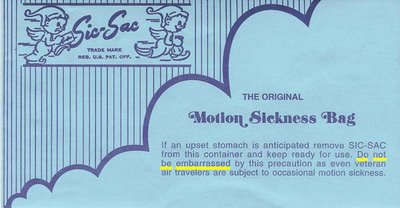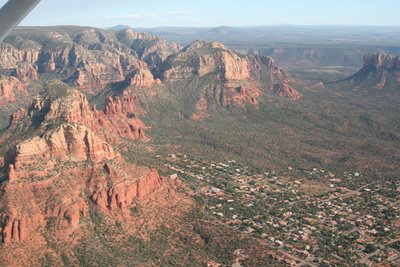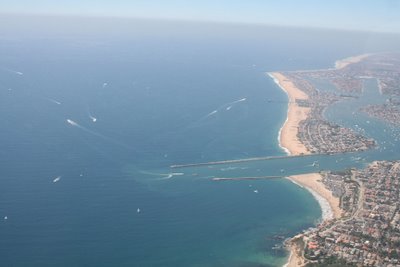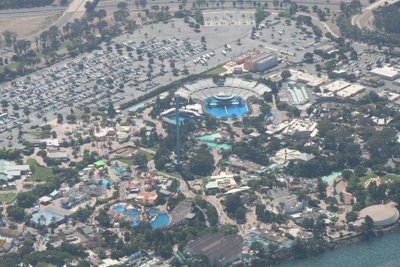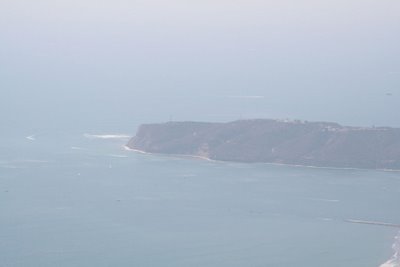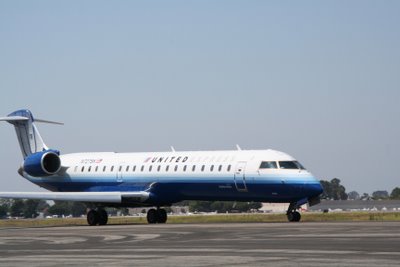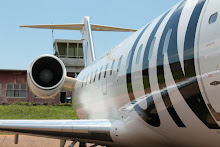11,500(G1000/j) = air sickness bag
Mexican Food 500ml
---
The other day, my friend Dana called and said she was dying to go flying. She hadn't really done any flying since she got her CFI. In between, she'd been to Europe and then an unfortunate accident landed her in the hospital for almost a week. Needless to say, I indulged. My wife is also getting in to the flying thing wanted to come along.
Where to go? Hmmm. Well, I could spare about 6 hours. Where can we fly round trip in six hours within range of Phoenix? The coast is 2.5 hours each way, no time to spend on the ground. Vegas is 2.5 and really not much to look at during the day anyway. Grand Canyon? Maybe. How about Monument Valley. That sounded like a great idea.
We planned to Page, AZ. Page is at the far Eastern edge of Lake Powell and about 75 miles from Monument Valley. Sounds like a plan.
Our departure from Stellar was unexpectedly delayed and we go off the ground an hour late. Oh well. We decide that we can modify the trip as necessary.
Dana took the left seat for the first leg. She was grinning from ear to ear as the G1000 MFD lit up and she realized she was going flying again. Our route took us from P19 through the West transition over Sky Harbor and we went GPS direct from there, thanks to Phoenix approach. The direct route from Phoenix put us over Cottonwood, Sedona, just West of Flagstaff, over the Western slopes of the San Francisco Peaks, over the Little Colorado and Eastern end of the Grand Canyon in to Page.
Page has a very nice airport, with a 6,000' x 150' runway right on the shore of Lake Powell. Needless to say, it's a very scenic approach. There were several Grand Canyon sightseeing aircraft landing around the same time as us, but we had no difficulty with a straight in approach for runway 33.
Apparently, competition is rather fierce between the two FBO's there and we were PROMPTLY greeted by the fuel guy from Classic Aviation. He offered a courtesy car before we could even inquire and off we went to a Fiesta Mexicana, which was recommended by the FBO. It wasn't exactly a courtesy car. More like a salvaged title, green Ford Windstar with a 2 out of 4 speed automatic, bad struts and a power steering pump that sounded like a pissed off camel. (Yes, I've pissed off a camel before)
At lunch, we decided our time was too limited to make it to Monument Valley and that we would just head back to Stellar. The people at the table next to us were European tourists. I think this was their first experience with Mexican food. The husband and wife each drank 3 glasses of water after 1 chip w/salsa each. It was hilarious. Lunch was better than expected and we left looking and feeling like Happy Buddhas. Way too much Mexican food and way too much soda.
Anyway, we got back to the airport and there was a sign at the FBO that read, "We are away from the front desk momentarily. Please be patient." Umm...We don't have time to be patient. We got off the ground late at Stellar and now there's no one there to pay for our fuel! Nana and Papa are watching the kids and they have other things to do today. Crap. We can't leave without paying for fuel. 45 minutes later, we find someone who can take our money. He takes nearly 15 minutes to settle the fuel bill! Things move a little slower in Page, Arizona.
Well, at least the left seat was mine now. We taxied to back to runway 33. During the run up, Dana recognizes the voice of someone we knew from school that now flys a C206T on flight seeing tours. We chatted briefly over the Unicom, bummed that we missed her.
We departed right over the lake and did a 360 over Waheap Marina, the gateway for every Lake Powell houseboat vacation. There are ENORMOUS houseboats at the marina, some exceeding 100' in length. We resolve to get a group of people together for a week and rent one.
We turn back and fly just West of Glen Canyon Dam. What a sight. Thankfully, Dana scans as much as I do and we both simultaneously caught a Caravan converging on us. The pilot obviously didn't see us. I took evasive action and all was well.
As we were heading along the Eastern edge of the Grand Canyon, boredom set in and Dana started reading the barf bag. We started joking about it and all of the sudden my wife chimed in with a completely mortified look on her face. Apparently, she got a touch...ok more than a touch of airsickness a few miles earlier and lost her lunch. She didn't know that there were barf bags on board and puked in a McDonald's cup. She thought we could smell it! Dana handed her a barf bag and she transferred the contents and that was that. What's funny is that neither Dana or I knew that she had puked. I felt terrible.
So we're running about 45 minutes later than we were supposed to, so I decided to check and see if my cell phone had any signal. Get this: we're 25 miles East of the Grand Canyon, 25 miles North of Flagstaff (with a 13,000' mountain between us) and there's 3 bars of signal. Can you hear me now? Well yes, actually. I called to give my in-laws a heads-up that we were going to be later than expected. Don't you love technology?
We're making great time when Dana's bladder decides to protest two 32 ounce Cokes and water. Luckily, we're just north of Sedona and we decide to set down there.
Sedona is a challenging airport. It is at just under 5,000' on top of a mesa. Today was my first time landing there...and it showed. The winds were favoring runway 21, at least according to ASOS. We entered the pattern and on final, felt a pretty decent tailwind and decided to go around. Being on top of a mesa leaves little margin for error. Flying over the airport, I notice that the windsock still favors 23 and decide to try it one more time. Apparently, the mesa does some strange things with winds at Sedona because there was a 10 knot tailwind on final. I decided the 1st 1/3 of the runway was my go-round point and just as I was about to push the throttle for a go around, we settled down. Sedona airport is not for the faint hearted.
We taxied to the ramp for a brief shut down for kidney relief and, after a nice short-field takeoff, were on our way back to Stellar.
The flight back was uneventful. We did the East transition over Sky Harbor and set down at Stellar at 5:00, an hour later than planned. Dana was nice enough to tie down and turn in the paperwork, allowing us to get home as soon as possible.

I don't feel sick. Do I look sick?
THE BAG.
Lake Powell, just North of Waheap Marina

Glen Canyon Dam
Eastern edge of the Grand Canyon, where Little Colorado meets The Colorado

Approaching
Sedona
Some perspective of Sedona Airport's mesa
One last cool shot of Sedona.
---
I've really become fond of the G1000 cockpit. Some of the things I really like are the digital audio replay, XM radio and NexRad, automatic altimeter activation and general ease of use. Really, the only thing I don't care for is the awkward transponder controls. In my limited experience opinion, there are too many steps to change squawk codes on the G1000.
I'll reserve judgement until I've used it for IFR flying. I need more time to be proficient for IFR use of the G1000.

